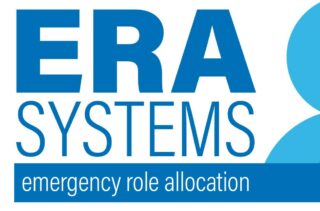Q Exchange
ERA Systems – welcome to a new ERA of emergency response
- Proposal
- 2022

What is the challenge your project is going to address and how does it connect to the theme?
Despite rigorous risk assessments, not all emergencies are preventable. However, for those high-risk/high-frequency incidents, like post-partum haemorrhage, technology can enhance teamwork. The system currently focuses on maternity with the long-term plan to then expand across multiple specialities.
Role allocation is standard practice in ATLS. Unlike Emergency Departments, ward based emergencies unfold with the mother/patient present making pre-arrival role allocation impossible. Calling for help requires sounding an emergency bell – numerous clinicians rush to attend, the emergency is declared and roles/tasks allocated at the bedside.
With ERA Systems clinicians know what the emergency is, their role, and the equipment/response needed. This enhances teamwork, maintains situational awareness, and helps provide care in a calm and timely manner.
User report emergencies were “more purposeful, less stressful; the dashboard for emergencies is an excellent idea; it seems so obvious now using technology this way, I can’t believe we’ve been working without it all these years.”
What does your project aim to achieve?
With the use of the ERA Systems, early findings suggest:
- Patient consent is gained with a more women-centred approach
- Situational awareness maintained reducing the chance of human factors errors
- Allocation of available workforce is more appropriate reducing the risk of leaving clinical areas vulnerable during emergencies
- Time intervals between declaration, task allocation and task completion are reduced
- Noise volume during emergencies has been observed to be dramatically reduced
ERA Systems aims to reduce the stress healthcare professionals face when responding to emergencies in the acute setting. Teams working more efficiently together report higher levels of psychological safety, which we know has an impact on staff retention and wellbeing.
Initial service user exploration highlights that psychological trauma following emergencies is common place. If teams can respond in a calmer, more patient-centred approach, then we hope to reduce risks of PTSD in those that experience emergencies in hospital.
How will the project be delivered?
This is a collaboration between Somerset NHS Foundation Trust and Blüm Health, a digital Health SME founded by NHS doctors and software engineers, which serves to collaborate with NHS organisations wanting to accelerate their clinical innovation. This project has already been proven within Taunton Hospital’s labour ward and now we have the ability to increase our offering to neighbouring NHS Trusts through Blum Health’s scalable software architecture. Taunton’s project team will continue to engage with new and existing beneficiaries to ensure that there is continuous feedback and improvement of ERA systems. We encourage Q members to support with improvement of this system, and they will also have the opportunity to support in it’s implementation and diversification within their local NHS Trusts.
How is your project going to share learning?
The concept of improvement through iterative cycles has formed the basis of the ERA Systems project from the outset. However, we would like to share our experience of using a mix of iterative cycles with simulation to create a fit for purpose digital solution.
We first gained support from the South West simulation network who opened the door to funding from Health Education England. This enabled us to build a proof of concept system that clinicians could simulate with using the real footprint of a maternity unit. To begin with changes were frequent, almost after each simulated emergency, until after a year long programme of simulation session, involving the multi-disciplinary team, the response screens were truly fit for purpose. Using simulation alongside rapid testing and adaptation to test a proof of concept has meant we have a system that is ergonomically designed and rooted in reducing human factors errors.
How you can contribute
- The promoter - it would be great to see who else out there recognises the problem that ERA Systems aims to overcome and to help promote the system as a digital solution that could be used across the NHS and beyond.
- The Networker - Find more participation sites to trial ERA Systems outside of the South West.
- The Investor - We are currently looking for investment to enable us to provide Trusts with the touch screens needed to trial ERA Systems at no cost to the organisation. eg. If a labour ward has 10 delivery rooms we need to provide 10 small touch screens and depending on the footprint of the unit between 1-3 large response screens.
Plan timeline
| 1 Jan 2021 | Simulation testing in clinical setting |
|---|---|
| 1 Jan 2022 | Showcase project across region and scope other clinical pilot sites |
| 1 Apr 2022 | Begin live testing in 1st pilot site |
| 1 May 2022 | Commence live testing in 2nd pilot site |
| 1 Jun 2022 | Commence live testing in 3rd pilot site |
| 1 Sep 2022 | Commercialise ERA Systems across the nhs |
Comments
Blake Powell 7 Mar 2022
I'm very excited to be working on this project alongside Somerset NHS Foundation Trust. ERA Systems will bring numerous high-impact benefits to patients, staff and the organisation as a whole. Blüm are proud to be involved!
Comments are now closed for this post.